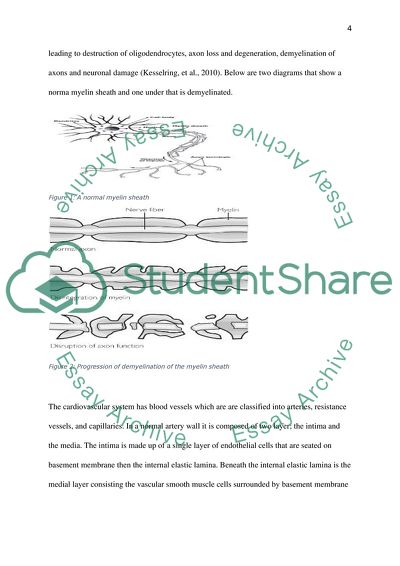Cite this document
(Similarity between the Pathological Processes in the Body and the CNS Essay Example | Topics and Well Written Essays - 1250 words, n.d.)
Similarity between the Pathological Processes in the Body and the CNS Essay Example | Topics and Well Written Essays - 1250 words. https://studentshare.org/biology/1814635-apart-from-the-anatomical-location-pathological-processes-in-the-cns-and-the-rest-of-the-body-are-very-similardiscuss-this-statement-using-multiple-sclerosis-and-atherosclerosis-as-examples-to-illustrate-your-answer
Similarity between the Pathological Processes in the Body and the CNS Essay Example | Topics and Well Written Essays - 1250 words. https://studentshare.org/biology/1814635-apart-from-the-anatomical-location-pathological-processes-in-the-cns-and-the-rest-of-the-body-are-very-similardiscuss-this-statement-using-multiple-sclerosis-and-atherosclerosis-as-examples-to-illustrate-your-answer
(Similarity Between the Pathological Processes in the Body and the CNS Essay Example | Topics and Well Written Essays - 1250 Words)
Similarity Between the Pathological Processes in the Body and the CNS Essay Example | Topics and Well Written Essays - 1250 Words. https://studentshare.org/biology/1814635-apart-from-the-anatomical-location-pathological-processes-in-the-cns-and-the-rest-of-the-body-are-very-similardiscuss-this-statement-using-multiple-sclerosis-and-atherosclerosis-as-examples-to-illustrate-your-answer.
Similarity Between the Pathological Processes in the Body and the CNS Essay Example | Topics and Well Written Essays - 1250 Words. https://studentshare.org/biology/1814635-apart-from-the-anatomical-location-pathological-processes-in-the-cns-and-the-rest-of-the-body-are-very-similardiscuss-this-statement-using-multiple-sclerosis-and-atherosclerosis-as-examples-to-illustrate-your-answer.
“Similarity Between the Pathological Processes in the Body and the CNS Essay Example | Topics and Well Written Essays - 1250 Words”. https://studentshare.org/biology/1814635-apart-from-the-anatomical-location-pathological-processes-in-the-cns-and-the-rest-of-the-body-are-very-similardiscuss-this-statement-using-multiple-sclerosis-and-atherosclerosis-as-examples-to-illustrate-your-answer.


